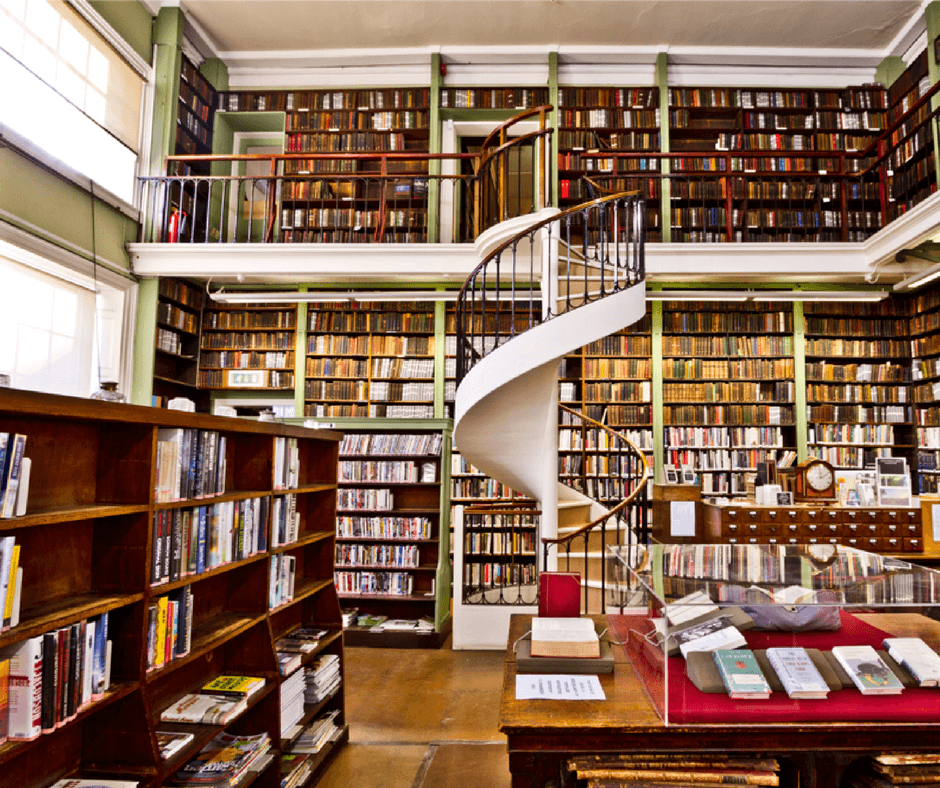It’s time for the Writerly Play Library, one of the most powerful–and most often forgotten–rooms.
If you’re joining this series mid-stream and wondering what in the world the Writerly Play Library is, you might find it helpful to start at the beginning.
Out of the five mental spaces in the creative landscape of Writerly Play, the Library is the one that has made the most difference in my creative development. Sometimes people have difficulty distinguishing between the Writerly Play Workshop and the Writerly Play Library. If that’s true for you, not to worry! In fact, I recommend installing a rotating bookcase between the two. Unlike the distance needed between the Writerly Play Studio and the Workshop, the Library and the Workshop are close neighbors, and their tools inform one another.
If the rooms are so closely related, why not knock the walls down and make them one? In this case, the separation is a reminder. In the Workshop, we look closely at our own work. We analyze what works and doesn’t in our own projects. We find areas of growth. But, what then? It’s time to pass through to the Library. We need to study masterworks, analyze what’s working and why, and then reverse-engineer success.
In the Library, you’re invited to study masterworks in many genres—analyzing, identifying strengths, and applying what you learn to your own work.
Like in our neighborhood libraries, we’re likely to start with the most familiar stacks. Maybe our favorite area of the Writerly Play Library is a shelf filled with books like ours. Remember to follow your curiosity. Unexpected connections can spark entirely new ways of thinking. Study sculpture, paintings, performances, and photographs. Find insight in the rhythm of a tango for the structure of your narrative poem. Find tone in a pen-and-ink sketch to try in your next script.
What type of doorway will invite your curious, investigative self out to play? Although the Workshop is an important entry point for the Library, you’ll want to install passageways between the other rooms and the Library, too. No matter what kind of obstacle you’re facing, the Library holds inspiration that can help you move forward. Design your doorways, and then choose one, and come inside.
Look around. Libraries come in all sizes and styles. How does yours look?
Do you have floor-to-ceiling bookshelves? Does it look more like a museum? Maybe it’s not a room at all, but rather a rambling building filled with performance spaces, listening rooms and study nooks.
The more you engage with Library thinking, the more you’ll push beyond your current skill level and into new territory.
The core skills in the Writerly Play Library include:
-
Choosing a Lens
-
Picking a Mentor
-
Finding Patterns
-
Identifying Strengths
-
Reverse Engineering
-
Personalizing Strategies
In order to play to your strengths while thinking in these ways, what tools, strategies or supplies ought to be in your Library? What tried-and-true strategies do you have? What kinds of tools or activities would you like to seek out?
Add to your toolkit or list. And if you’d like to explore some additional possibilities, here’s my recent list of Library tools and strategies.
How do you tend to use your Writerly Play Workshop and Writerly Play Library? Do you keep the door open between them? Like so many others, do you tend to forget the power of the Library? Are there Library resources that you haven’t yet used, but that you’re curious to examine more closely?
We have only one room left in The Nuts and Bolts of Writerly Play. That’s not to say that you or I won’t discover additional rooms in the future. The beauty of a loose framework like Writerly Play is that there’s always room to explore and grow. Tomorrow, we’ll make our way to the Writerly Play Cafe. See you soon!


